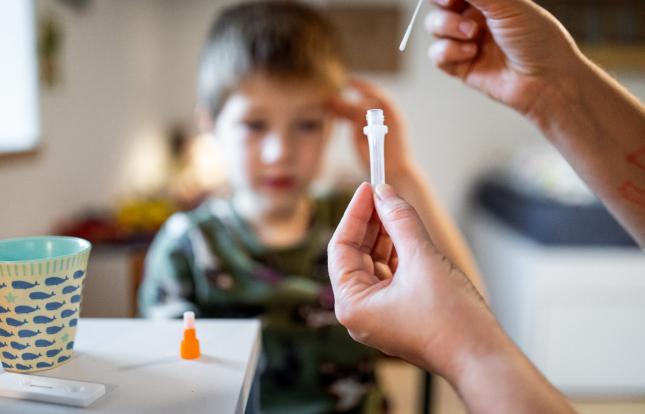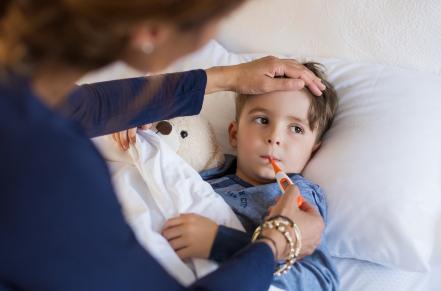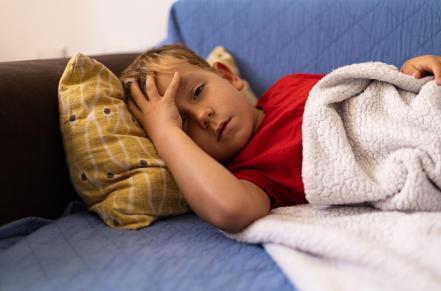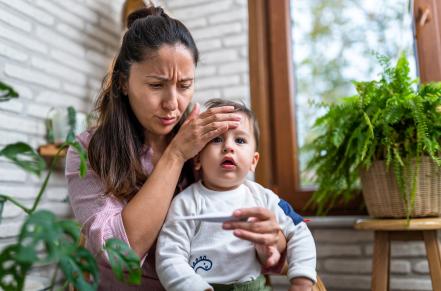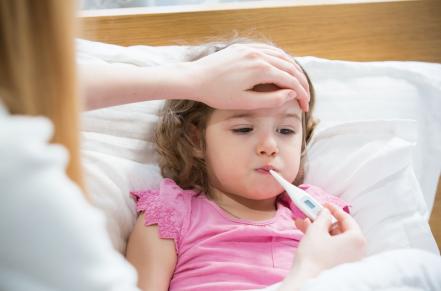What is COVID-19?
COVID-19 is a respiratory illness caused by the SARS-CoV-2 virus. The virus is constantly changing and can lead to the emergence of variants that may have new traits, like different ways of spreading or how sick it makes people.
Who gets COVID-19 and how?
COVID-19 is caused by a strain of the coronavirus. Coronavirus is a common virus that can cause cold-like symptoms. Many people with COVID-19 have no symptoms, or think they just have a common cold.
The virus that causes COVID-19 spreads through the air when a person coughs, sneezes, sings, or talks. It can also spread when droplets land on surfaces and then are rubbed into the eyes, nose, or mouth. COVID-19 most commonly spreads during the first week of the infection. Anyone infected with COVID-19 can spread it, even if they do NOT have symptoms.
People who are at high risk for getting very sick or requiring medical attention if they get COVID-19 are premature infants, older adults, people with chronic health conditions, and people with weakened immune systems.
What are the symptoms of COVID-19?
Children with COVID-19 usually have mild symptoms or no symptoms. A child with COVID-19 may have one or more of these symptoms:
- Fever
- Runny nose and congestion
- Sore throat
- Cough
- Headache
- Tiredness
- Muscle pain
- Loss of taste or smell
- Nausea or Vomiting
- Diarrhea
Children with COVID-19 generally don’t get as sick as adults. However, a rare but serious concern is Multisystem Inflammatory Syndrome in Children (MIS-C). MIS-C causes inflammation in different parts of the body, like the heart, lungs, brain, and digestive tract. It usually occurs two to six weeks after a child gets COVID-19. Symptoms include abdominal pain, vomiting, diarrhea, dizziness, and rash. Children with these symptoms should be seen by a health care provider to be evaluated for MIS-C. For more information about MIS-C, visit: https://www.cdc.gov/mis/signs-symptoms/ .
Should a child with COVID-19 stay home?
Children should stay home if they have COVID-19 symptoms.
- If a child tests positive for COVID-19, they should stay home until they are fever free for 24 hours and their symptoms are mild and improving. Follow these guidelines from the Centers for Disease Control (CDC).
- The child can then return to normal activities, but take added precautions over the next 5 days, including increased ventilation, good hygiene, masking (children under age 2 should not wear a mask), physical distancing, and/or testing when around others indoors.
- Avoid contact with people at higher risk for COVID-19, including the elderly, during these 5 days of added precaution.
Most children with COVID-19 get better by resting at home, staying hydrated, and managing their symptoms. Children with COVID-19 may need to see their health care provider if they have a chronic illness, their symptoms are restricting their activity, or their symptoms are getting worse. A child’s health care provider may suggest over-the-counter medications for fever, cough, and congestion.
If a child has difficulty breathing, confusion, chest pain, inability to stay awake, or changes in the skin, lip, or nail color (e.g., they become pale, gray, or blue), call 911 or have them see their health care provider immediately.
Tips to reduce the risk of COVID-19
Practicing healthy habits can reduce the likelihood of getting COVID-19:
- Use the Daily Health Check, exclusion policy, and staff health policy to guide health and safety decisions in your program.
- Practice good handwashing.
- Stay up-to-date with vaccinations.
- Show children how to cover their cough and sneeze.
- Follow the routine schedule for cleaning, sanitizing, and disinfecting in Caring for Our Children Appendix K
- Ventilate the indoor space by using an exhaust fan, open windows, and/or portable air cleaner; maintain and check the program’s HVAC system and use MERV 13+ filters.
- Spend time outdoors, when possible. See recommendations about Active Outdoor Play for more information.
What to do if a child has been exposed to someone with COVID-19:
- Monitor for COVID-19 symptoms.
- Testing is an option, especially if the child has symptoms of COVID-19.
Where can I find more information?
California Department of Public Health (2023) Considerations When a Child Has Symptoms of Illness in Child Care or School at https://www.cdph.ca.gov/Programs/CID/DCDC/Pages/Schools/SymptomGuidance.aspx
California Department of Public Health (2024) Public Health Guidance for TK-12 Schools and Child Care Settings to Support Safe In-Person Services and Mitigate the Spread of Communicable Diseases, 2024-2025 School Year at https://www.cdph.ca.gov/Programs/CID/DCDC/Pages/Schools/TK-12-Guidance-2024-25-School-Year.aspx#
California Childcare Health Program (2023) Sample COVID-19 Pandemic Policy Template at https://cchp.ucsf.edu/resources/web-pages/sample-covid-19-pandemic-policy
Centers for Disease Control and Prevention (2024) About COVID-19 at https://www.cdc.gov/covid/about/index.html
Updated December 2024, UCSF California Childcare Health Program
This illness sheet was made possible with funding from the Heising-Simons Foundation.

